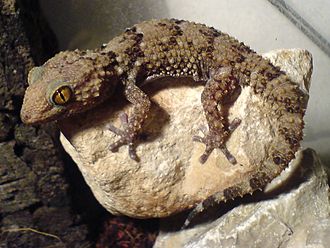Type the name of the breed you're looking for below
[wpdreams_ajaxsearchlite] Don't see the breed your're looking for? Click here and let us know!
Bibron’s Gecko
| Place of Origin and Range | The Bibron's Gecko is distributed across the southern part of the African continent. It is common in South Africa, where it is one of the largest gecko species. |
| Description | Its base colour is brown, and it has a beaded pattern dorsally, with black crossbars. The male has white dots. The female may, as well. The belly is white or very light brown. The newly hatched Bibron's gecko has solid line and colour patterns, while the adult's patterns are more broken. |
| Morph Patterns Available | Yes |
| Adult Size | Can grow up to 8 in (20 cm) |
| Accommodation | These animals should be housed in pairs and need a medium sized terrarium. The temperature should be between 25 and 28°C. The humidity should be not too high. Most geckos prefer warm habitat with lots of shade, hides, and lots of branches for climbing. Provide a small water dish and mist twice daily. Cover the sides of the cage when possible to prevent injury to your gecko from running into glass. |
| Lifespan | Can live 6+ years |
| Feeding / Diet | Feeds on a variety of insects and fruit. |
| Breeding | The female usually lays two clutches per year, with two eggs per clutch. |
| Other Considerations | Healthy geckos with appropriate living conditions shed regularly. They shed completely and often eat their shed to the point where the keeper may not even notice that the gecko has shed. Some geckos experience shedding problems occasionally and others chronically have difficulty shedding. Signs of shedding difficulty range from large sheets of shed clinging to the head, tail or limbs to residual shed left around the eyes, on the tail tip or the toes. This shed must be removed since it can cause constrictive damage to the extremities. All geckos require calcium to maintain strong bones and vitamin D3 to aid in metabolizing the calcium. Calcium is generally supplied in powdered form in a bowl, through dusted feeders or as an ingredient in fruit. |



